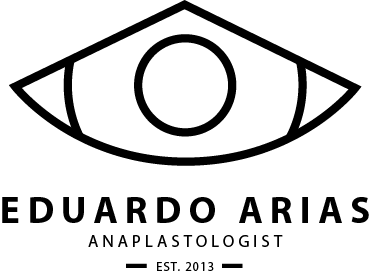



The ocularist
The ocularist
Ocular Prosthetics / Artificial Eyes
The loss of an eye can be both physically and emotionally painful. A prosthetic eye can help improve the people who have lost an eye to disease or injury. An Ocularist is a professional specializing in the fabrication and fitting of custom-made ocular prosthetics or artificial eyes. An eye may be removed due to trauma, glaucoma, infections inside the eye, eye tumors. Surgical methods to remove an eye inlcudes: enucleations, evisceration, exenteration.
All photography copyright © Eduardo Arias.

Process
Process
Impression
After evaluating the eye socket an impression is taken, allowing an accurate fit, maximum movement and comfort.
Sculpting & Fitting
A wax prototype is cast from the impression and is inserted under the eyelids. This temporary model is modified until the correct gaze, opening and positioning are achieved in relation to the unaffected eye. During this step, special attention is given to maximum comfort and movement.
Painting
All painting is hand-made using dry pigments. The iris is created by painting many semi-transparent layers to capture the patterns and color of the iris.
Adjustments & Delivery
Every prostheses is fitted to match its fellow palpebral fissure or eye opening. It is evaluated for size and contour.

Maintenance
Maintenance
Inserting & Removing
To insert the prosthesis, lift the upper eye lid and gently slide the prosthesis under the superior lid, then hold the prosthesis and pull down the lower lid.
To remove the prosthesis, pull down the lower eye lid, look up and slide a finger from the nose towards the ear. Let the edge of the prosthesis to slide out over the lower lid and gently removed the prosthesis.
Cleaning
With the prosthesis removed, wash with mild soap or baby shampoo. Using a washcloth, rub the prosthesis and make sure to rinse all residue and built up protein. Have it professionally polished twice a year.
Don't use rubbing alcohol to clean the prosthesis: It will dull the surface.
